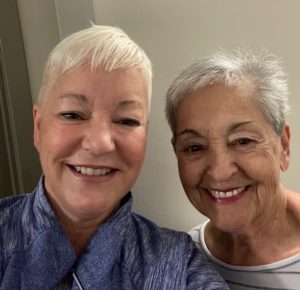IRIS In Action: An Interview With Dr. Kim Perry

Dr. Kim Perry is a board-certified, emergency medicine doctor with 30 years of experience working in underserved community hospitals. She discovered IRIS a few years ago when she was looking to fill care gaps while working as SVP and Chief Medical Officer at United Healthcare. Since then, she has facilitated its implementation and success in a small healthcare practice in Missouri.
We interviewed Dr. Perry to hear more about her story with IRIS and its success in various healthcare practices in Missouri. Keep reading to hear about her discovery of IRIS and how IRIS has touched her life, as well as the lives of patients.
Before IRIS
When Dr. Kim Perry was working in a small healthcare practice in St. Louis, she was designated as the overseer of revenue integrity. She saw a distinct overutilization of the ER and a lack of primary care for patients, especially uninsured individuals.
“Although I’m an ER doc, I was still very focused on keeping people out of the ER through primary and preventative care.”
It was a part of her effort as an ER doctor to minimize the number of people who came into the ER by increasing the ease and occasion of preventative screenings and procedures. This gap was particularly evident when it came to eye care for diabetic patients.
Diabetic individuals must receive a diabetic eye exam every year to ensure they do not have the beginning stages of diabetic retinopathy, which causes blindness in its late stages if left untreated.
Prior to implementing the IRIS solution, diabetic patients were getting referred to one of two ophthalmology groups in the area during their yearly check-ups. One of the practices was right upstairs, so most patients wanted to go there. While this was more convenient for the patients, this particular office would often perform the test, but the physician wouldn’t send the exam results back to the healthcare practice, which resulted in a significant information and treatment gap for the primary care provider.
In the end, even when the diabetic retinopathy screening got done, it was a very inefficient process, causing a headache for both the provider and patient.
Dr. Perry began working as a physician executive for United Healthcare after. When she got promoted to Chief Medical Officer, she began to get involved in the compliance and procedure necessary for billing and documentation. This was when Dr. Perry found IRIS.
More specifically, she was working with CoxHealth in Springfield, MO, a practice that had implemented the IRIS solution into their workflows to help close gaps in their preventative diabetic care methods. She saw how simple things like a handheld camera and the IRIS Reading Center were making a big impact on the HEDIS compliance measures the practice was achieving. Not to mention, the number of patients receiving their annual diabetic retinopathy eye exam increased as well, enhancing the overall quality of care being provided to the practice’s diabetic population.
IRIS Saving Lives
The area in which the hospital where she worked as an emergency medicine physician does not have many accessible ophthalmology offices for patients, therefore IRIS struck Dr. Perry as a tool that could benefit the healthcare practice at which she worked before moving to United Healthcare.
After implementation, IRIS quickly became an essential tool that boosted the number of preventative tests performed annually. IRIS takes the time to train current employees of a client, either in-person or virtually. Dr. Perry’s healthcare practice now has 2-3 people in the office who can perform IRIS tests, and because the tests are so easy to perform and the training material is so accessible, people at the office now train others to perform them as well.
But one of the most interesting and meaningful things that came from our conversation with Dr. Perry was her personal experience with the capabilities of IRIS.
In the first few months, they had IRIS, Dr. Perry did an exam on her mother. The pictures were sent to the IRIS reading center, and although her mother wasn’t diabetic and no diabetic retinopathy was found, the IRIS interpreting provider still flagged a macular degenerative condition. While Dr. Perry had noticed that her mother, who has dementia, had stopped doing her morning crossword puzzles, she hadn’t thought that it had anything to do with her eyes.
Dr. Perry’s mother went in for a laser treatment shortly after her results came in and within a day, her eyesight was back to normal. She began her crosswords once again.

Dr. Kim Perry and Her Mother
Patients and The IRIS Switch
When asked how patients were taking to the addition of IRIS tests to their appointments, Dr. Perry said that most of them didn’t mind the extra couple of minutes it took to perform the test.
Dr. Perry’s office elected to provide this service at no extra cost to their patients, but different practices have taken different approaches to this, with some charging a small fee for the quick diabetic retinopathy test, as a normal test result means a patient can avoid a visit to an eye specialist entirely.
IRIS exams for Dr. Perry’s practice involved putting a patient in a dark room for a few minutes to let their eyes dilate, snapping a picture, uploading the images, and sending them off to IRIS’s reading center. In the end, the whole process would take a few minutes. Dr. Perry said that around year’s end, she would schedule around 30 in one day and get them all done before the year’s end.
In The End
To conclude our interview, Dr. Perry sang the praises of IRIS as a solution that is, “easy and can get [exams] done quickly, and [she’s] all about that.”
Her husband, who currently works at that same healthcare practice in St. Louis, went from a two-star HEDIS rating for eye exams and within a year it went up to a four-five star rating.
In the words of Dr. Perry, “you need one [IRIS test per patient]! A year! And it takes minutes!” It was a no-brainer for her in improving the level of eye care her and her practices could give to their diabetic patients.
Interested in saving the sight of more of your patients with IRIS? Click here to contact us about implementing IRIS in your healthcare practice.
Get started with IRIS today.
Want to know if IRIS is right for you? Schedule a one-on-one consultation with our team. We’re here to help.